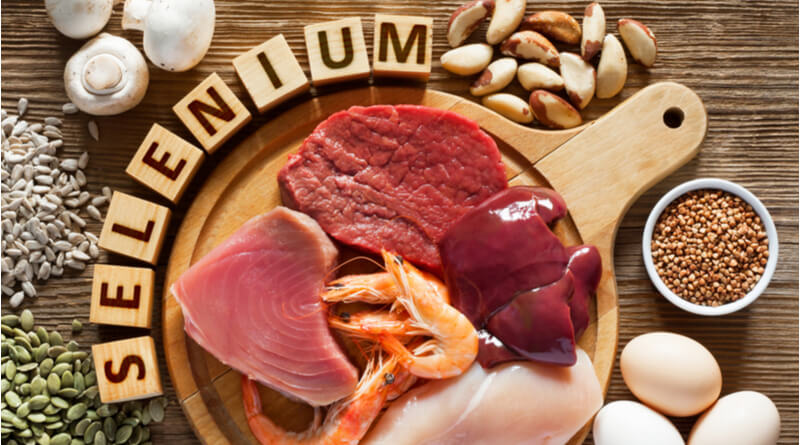
Selenium
What is Selenium?
Your body needs selenium as an essential mineral for many vital functions and activities like fighting infections and reproduction. The amount of selenium in vegetables depends on the amount of this substance in the soil in which they are grown. Items such as rainfall, evaporation, pesticides, and pH levels can affect the selenium amounts in the soil and lead to selenium deficiency, which is common in many countries.
Apart from where you live, some diseases and conditions can make it difficult to absorb selenium; Factors such as dialysis, AIDS, and some digestive problems. Patients with Graves' syndrome or hypothyroidism should also be careful about the amount of selenium intake as a factor in thyroid care.
How much selenium do we need daily?
Low selenium levels can indeed lead to serious health problems, But it is also too toxic. According to the US National Institutes of Health, the amount of selenium required for each person depends on the following values:
•Newborns up to six months: 15 micrograms per day
•Seven months to three years: 20 micrograms
•Four to eight years: 30 micrograms
•Nine to thirteen years: 40 micrograms
•Over fourteen years: 55 micrograms per day
Women who are pregnant or breastfeeding need 60 micrograms of selenium a day. In the following, we will introduce you to the foods that contain the highest amount of selenium.
What foods contain selenium?
Plant foods are the main supplier of selenium in most countries of the world. The amount of selenium in the soil, which varies by location, determines the amount of selenium in plants grown in that soil. People who live in areas with selenium-rich soils have higher intakes of this nutrient generally. Soils in some parts of China and Russia contain a low level of selenium, and dietary selenium deficiency is often reported in these areas. Selenium also can be found in some meats and seafood. Animals fed cereals or plants grown in selenium-rich soil have higher levels of selenium in the muscle. Meat and bread are common food sources of selenium. Some nuts, especially walnuts, are excellent sources of selenium.
When does selenium deficiency occur?
As mentioned, selenium deficiency is very common in parts of China where the soil is poor in selenium. The deficiency of this nutrient is associated with a disease called "Kishan". The most common symptoms of selenium deficiency in this disease are enlargement of the heart and disruption of its normal function. Kishan disease is found in selenium-poor areas of China, where the daily intake of men and women is less than 19 micrograms and less than 13 micrograms, respectively. These intake values are significantly lower than the RDA for selenium. Selenium deficiency also affects thyroid activity, as selenium is essential for the production of active thyroid hormones. Scientists believe that selenium deficiency can exacerbate the effects of iodine deficiency on thyroid function. Adequate nutritional status of selenium helps protect against some of the neurological effects of iodine deficiency.
Acute gastrointestinal diseases reduce selenium absorption and result in depletion or deficiency. Digestive problems that interfere with the absorption of selenium usually affect the absorption of other nutrients and require regular follow-up of nutrition so that your doctor can recommend the appropriate treatment.




